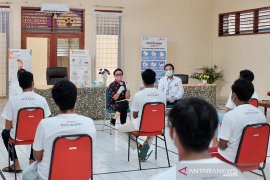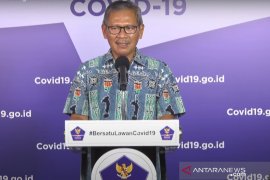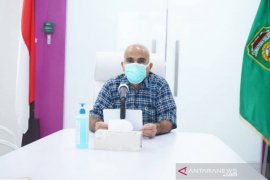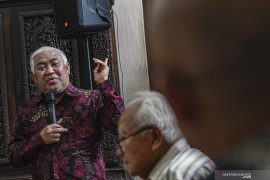The effort to map the potential tourism villages is aimed to attract as many tourists as possible."Jakarta (ANTARA News) - Bantul district in Yogyakarta is endowed with beautiful natural scenery and wide range of interesting tourist villages for foreign and domestic tourists to visit.
Situated along the South Sea on the south of Yogyakarta, the district of Bantul has some beautiful beaches, and a landscape dominated by rice fields and beautiful villages.
Therefore, the district continues to develop its tourist villages to attract more tourists because tourism is one of the things that supports local revenue.
"Development of tourist villages is our priority because most of the foreign tourists arriving in Yogyakarta want to visit and stay for a while in the villages," Bantul Tourism and Culture Office spokesman Bambang Legowo remarked in Bantul Saturday.
Bantul district has 75 villages, and 36 of them have now become tourist villages due to their own potential and attraction, according to him.
The tourist villages in Bantul are divided into three categories, namely embryonic tourist villages, developing tourist villages, and independent tourist villages, he said.
Known as the centers of wooden batik, the villages of Kebonagung, Wukirsari Imogiri, Tembi Sewon, and Krebet Pajangan are classified into independent tourist villages because they have so far been visited by many foreign tourists.
"We will also assist in the promotion of these tourist villages so that we can achieve our main goal of making foreign tourists feel at home, stay longer, and find serenity," Bambang said.
Yogyakarta is one of the leading cultural centers in Java, and has numerous districts which are blessed with many beautiful villages, which are being developed and promoted to attract as many tourists as possible.
Every district in Yogyakarta has numerous villages that can be developed into rural tourist spots, one of them being the Kembangarum village.
"A visit to the Kembangarum tourism village is considered incomplete without exploring the Arum Laris Art House, where the tourists can learn about the traditional Javanese music instrument of gamelan," Kembangarum village spokesman Heri Kustriatmo has stated in Sleman.
Besides this, he noted that the village management also offers batik and painting courses to the tourists. The visitors can later take home the art work, which they created during the course.
"We are also offering an environment education program to the visitors as part of our efforts to make them feel at home, as they gain new experiences and everlasting memories," Heri remarked.
According to him, the tourists visiting the Kembangarum tourism village will be given information and a demonstration on how to plow fields, plant rice saplings, and ways to manage aquaculture.
"The tourists are guided by the local farmers as they gain new and memorable experiences while they join the farmers in plowing fields, planting rice saplings, and learning ways of managing the aquaculture, which are part of the tourist village management concept," Heri added.
He reported that the concept of a tourism village has inspired him to develop a model of education that the real world can implement while living in harmony with nature.
The concept was developed several years ago, when the governments of several districts in Yogyakarta realized that the visitors can be offered much more than the familiar attractions such as Yogya Keraton, as well as the Borobudur and Prambanan temples.
"Apart from enjoying the breathtaking views of mountains, forests, and plantations, the tourists can also have a memorable opportunity of trying their hand at plowing the fields and planting rice saplings with the local farmers and the community," he explained.
He further added that the Kembangarum tourist village, which occupies a 22-hectare plot of land, was inaugurated in 2005, as it offered ample arena for games and other attractions for the visitors.
"The Kembangarum tourism village is located at the slope of Mount Merapi, at an altitude of 700 meters above the sea level, thus enabling the tourists to enjoy the fresh and cool mountain air," he emphasized.
According to him, Kembangarum is also rightfully known as the tourism village of education in Yogyakarta, since the visitors can not just enjoy the panoramic beauty of its surroundings, but also gain an insight into the local culture and tradition.
Meanwhile, the practitioner of tourism and culture in Yogyakarta Widi Utaminingsih stated that the tourism villages in the region should be mapped for the development of tourism.
"Yogyakarta has a lot of villages with the potential to develop tourism, and therefore, they should be mapped so that the tourists are free to choose which village they want to visit," remarked Utaminingsih, the chief of Widya Budaya Foundation.
She pointed out that every district in Yogyakarta has several tourism villages, but only a few of them have the potential to attract tourists.
"The effort to map the potential tourism villages is aimed to attract as many tourists as possible," she claimed.
Further, she pointed out that the rural tourism sector, together with other tourist spots in Yogyakarta, can offer a complete tourism package to the visitor.
"Every rural tourist spot in Yogyakarta has its own culture and tradition and is blessed with natural beauty, which is unique in itself," explained Widi.
She noted that the Widya Budaya Foundation is concerned about the growth of the tourism sector and cultural development in the region.
According to her, every rural tourist spot has agricultural fields, animal farms, and cultural attractions that can be developed to attract tourists.
"Ideally, a tourism village should have local elements, so that the tourists have a unique experience," Widi stated, adding that the local character of a tourism village should be reflected in its accommodation and transportation facilities, as well as in the presentation of its historical information.
Further, she urged the the people managing the villages to continue improving their services for the villages to remain a tourist destination.
(T.O001/INE/KR-BSR)
Reporter: Otniel Tamindael
Editor: Priyambodo RH
Copyright © ANTARA 2016












